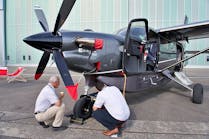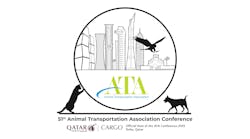GAMA Welcomes Landmark Bilateral Aviation Safety Procedures
Washington, DC – The General Aviation Manufacturers Association (GAMA) today welcomed the signing of two new agreements between the European Aviation Safety Agency (EASA) and its partner regulators, the U.S. Federal Aviation Administration (FAA) and Transport Canada Civil Aviation (TCCA), during the annual Certification Management Team (CMT) Meeting in Ottawa, Canada. These new agreements form the first major steps in the implementation of the CMT Collaboration Strategy, published in 2016, to increase the level of safety cooperation among aviation safety regulators from the European Union, the United States and Canada.
“These are landmark agreements that significantly improve the acceptance of aviation products and approvals among our industry’s key safety regulators,” said GAMA President and CEO Pete Bunce. “The global general aviation manufacturing industry will benefit from these new provisions, which will reduce costs and delivery lead-times for aircraft exports in both directions across the Atlantic, while maintaining the highest levels of safety.”
Revision 6 of the EASA-FAA Technical Implementation Procedures for airworthiness and environmental certification (TIP) is a significant milestone toward a risk-based approach to reduce and further eliminate redundant authority involvement. It establishes a three-tiered approach for all projects based on mutual confidence and safety risk: reciprocal acceptance, including all Technical Standard Orders for equipment, maintenance repair data and alterations on import aircraft; streamlined validation for basic design approvals, including all piston engine and propeller type certificates; and introduction of a new validation work plan approach to manage projects to focus Validating Authority technical involvement only in appropriate areas defined up front, based on risk.
Revision 3 of the EASA-TCCA Technical Implementation Procedures for airworthiness and environmental certification (TIP) was also signed during the CMT meeting. This agreement increases cooperation during certification and validation projects, and increases data sharing for in-service aircraft operations.
“GAMA looks forward to working with regulators to ensure a smooth and effective transition to the new processes during the six-month implementation period,” added Bunce. “We also look forward to seeing these provisions enacted with other bilateral partners, such as Brazil’s National Civil Aviation Agency.”


